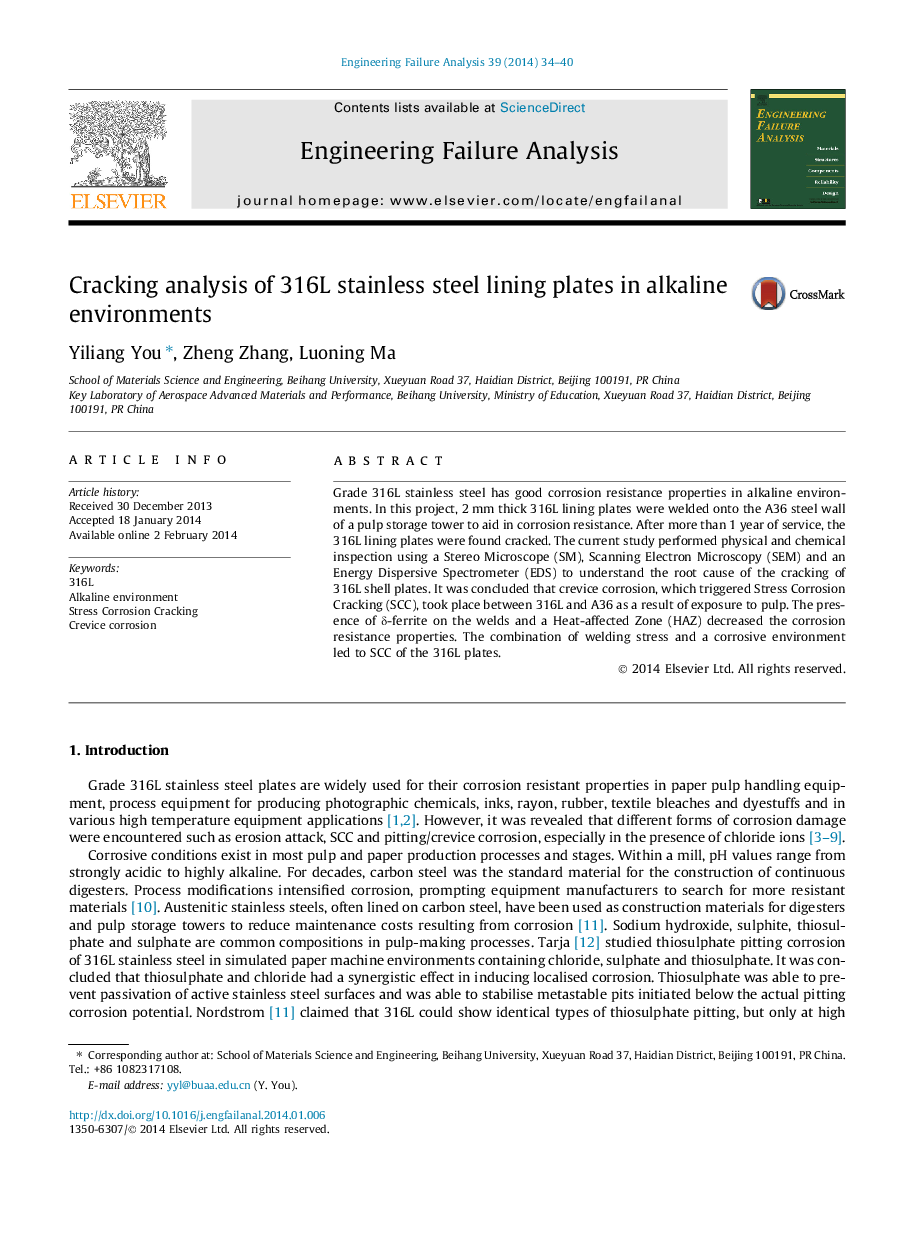| Article ID | Journal | Published Year | Pages | File Type |
|---|---|---|---|---|
| 773864 | Engineering Failure Analysis | 2014 | 7 Pages |
•The 316L lining plates cracked in alkaline pulp.•We determine the failure mode of 316L lining plates to be Stress Corrosion Cracking.•Crevice corrosion triggered Stress Corrosion Cracking.•δ-Ferrite in weld and HAZ decreased the corrosion resistance properties.
Grade 316L stainless steel has good corrosion resistance properties in alkaline environments. In this project, 2 mm thick 316L lining plates were welded onto the A36 steel wall of a pulp storage tower to aid in corrosion resistance. After more than 1 year of service, the 316L lining plates were found cracked. The current study performed physical and chemical inspection using a Stereo Microscope (SM), Scanning Electron Microscopy (SEM) and an Energy Dispersive Spectrometer (EDS) to understand the root cause of the cracking of 316L shell plates. It was concluded that crevice corrosion, which triggered Stress Corrosion Cracking (SCC), took place between 316L and A36 as a result of exposure to pulp. The presence of δ-ferrite on the welds and a Heat-affected Zone (HAZ) decreased the corrosion resistance properties. The combination of welding stress and a corrosive environment led to SCC of the 316L plates.
